Abstract
3-Hexulose phosphate synthase and phospho-3-hexuloisomerase were purified 40- and 150-fold respectively from methane-grown Methylococcus capsulatus. The molecular weights of the enzymes were approximately 310000 and 67000 respectively, as determined by gel filtration. Dissociation of 3-hexulose phosphate synthase into subunits of molecular weight approx. 49000 under conditions of low pH or low ionic strength was observed. Within the range of compounds tested, 3-hexulose phosphate synthase is specific for formaldehyde and d-ribulose 5-phosphate (forward reaction) and d-arabino-3-hexulose 6-phosphate (reverse reaction), and phospho-3-hexuloisomerase is specific for d-arabino-3-hexulose 6-phosphate (forward reaction) and d-fructose 6-phosphate (reverse reaction). A bivalent cation is essential for activity and stability of 3-hexulose phosphate synthase; phospho-3-hexuloisomerase is inhibited by many bivalent cations. The pH optima of the two enzymes are 7.0 and 8.3 respectively and the equilibrium constants are 4.0×10−5m and 1.9×102m respectively. The apparent Michaelis constants for 3-hexulose phosphate synthase are: d-ribulose 5-phosphate, 8.3×10−5m; formaldehyde, 4.9×10−4m; d-arabino-3-hexulose 6-phosphate, 7.5×10−5m. The apparent Michaelis constants for phospho-3-hexuloisomerase are: d-arabino-3-hexulose 6-phosphate, 1.0×10−4m; d-fructose 6-phosphate, 1.1×10−3m.
Full text
PDF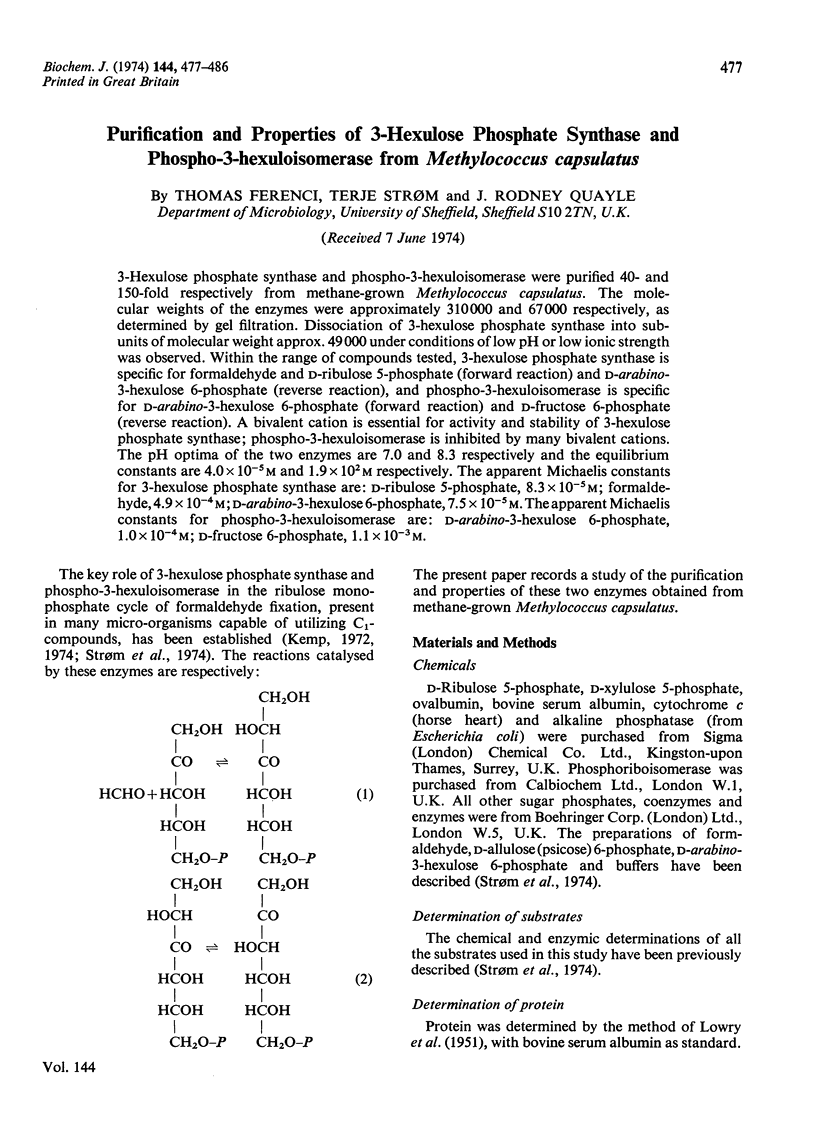
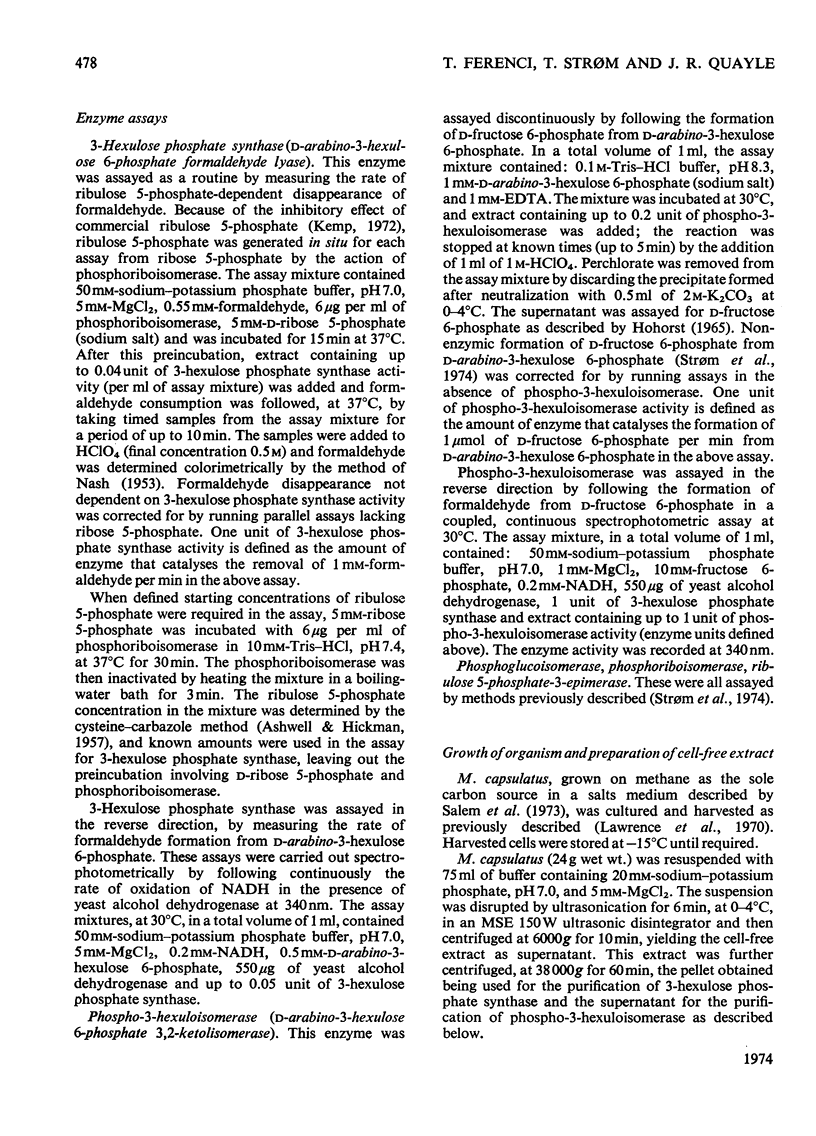
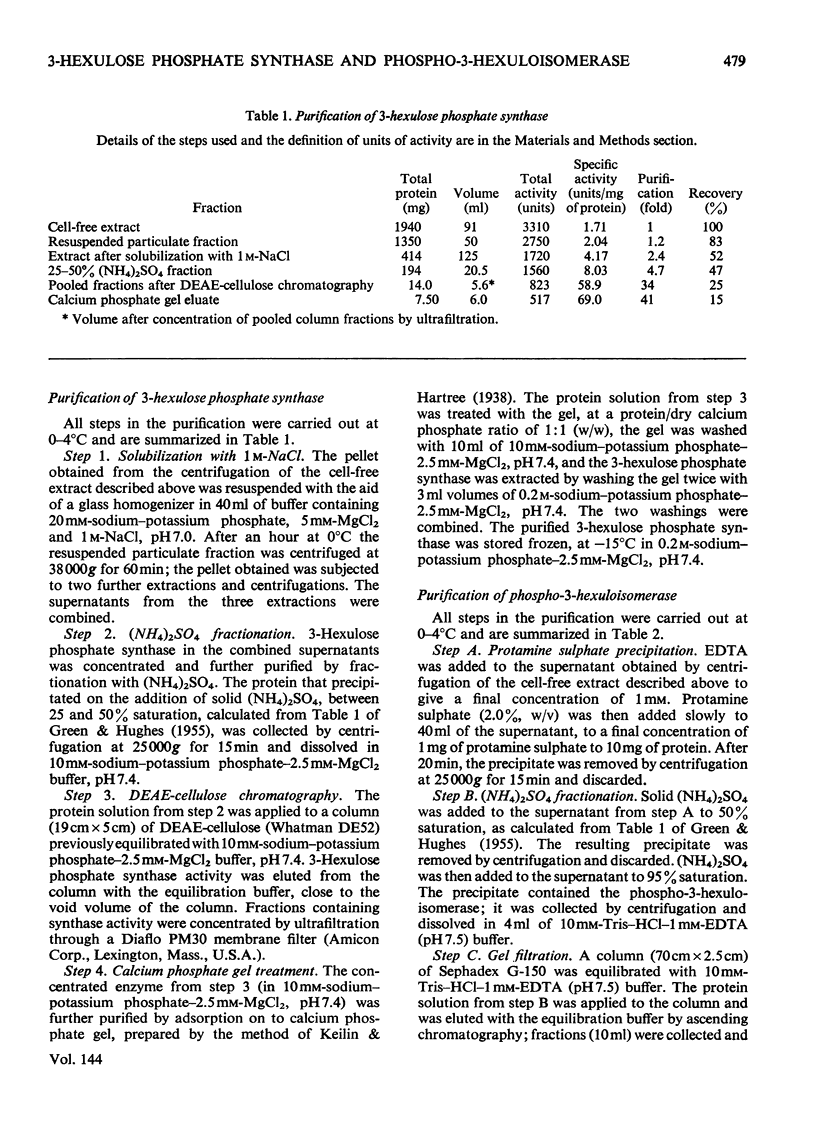
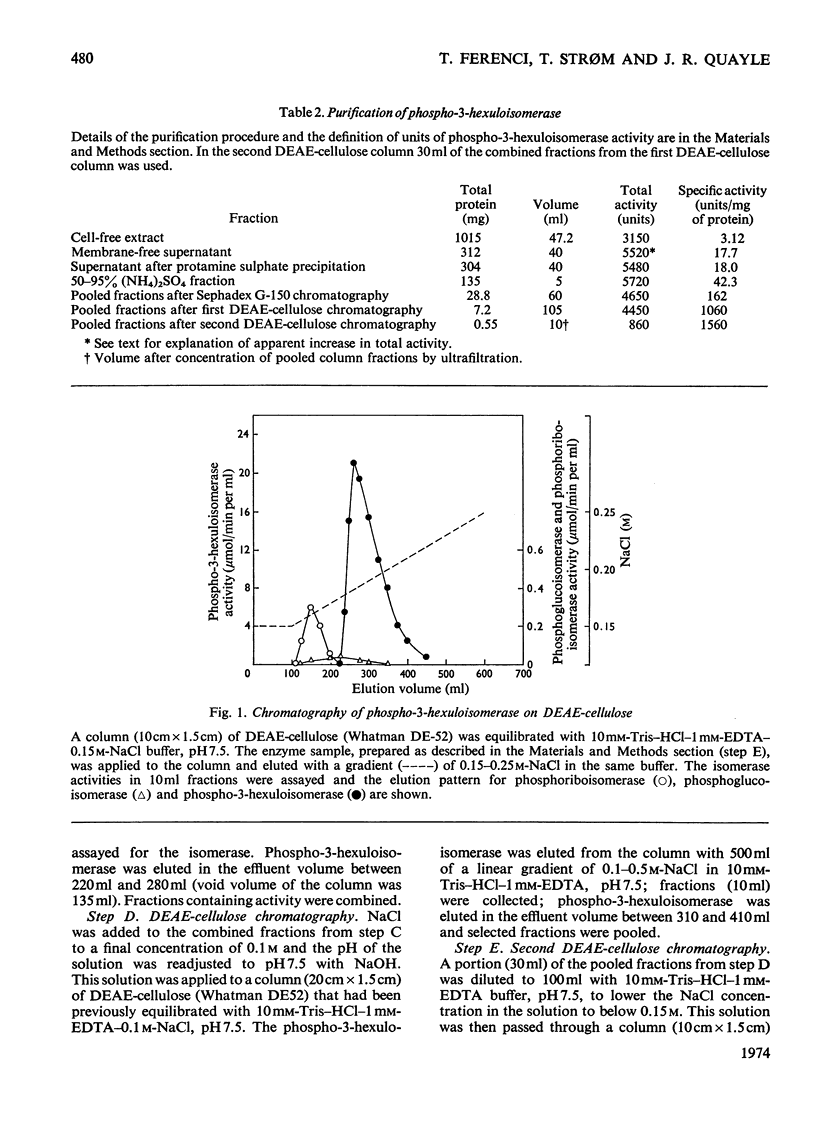
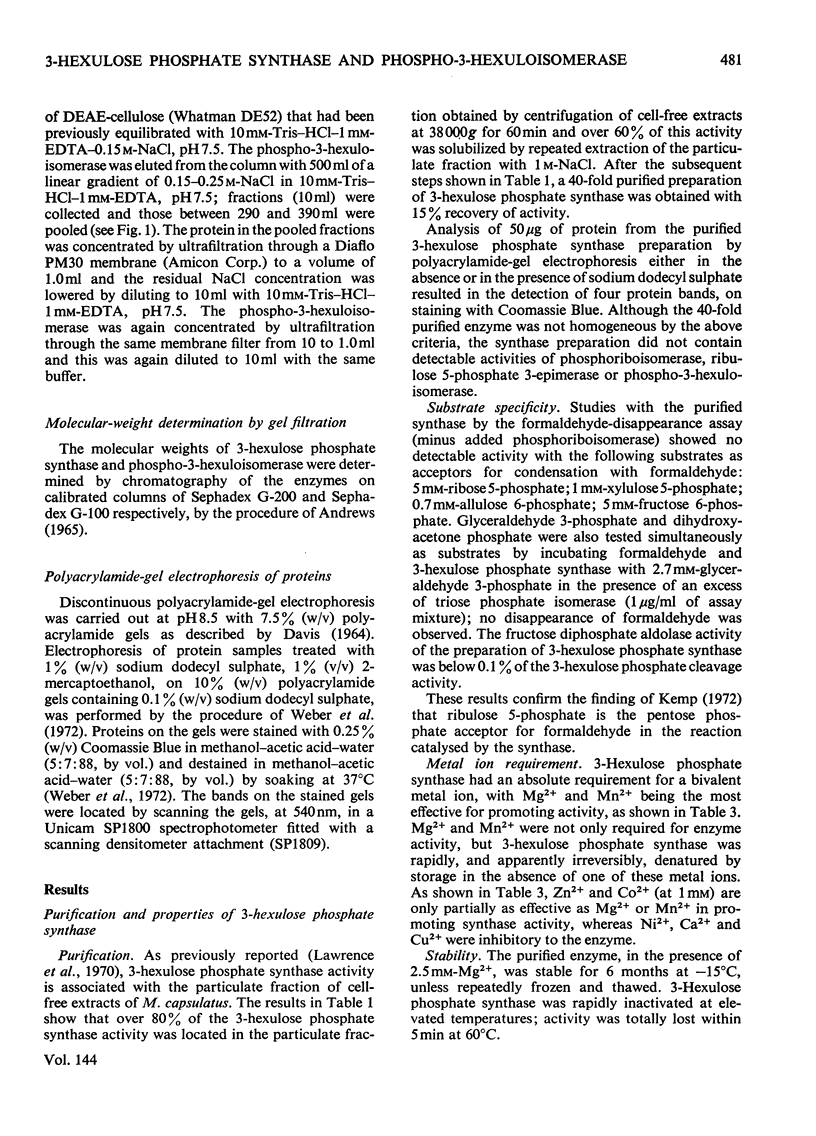
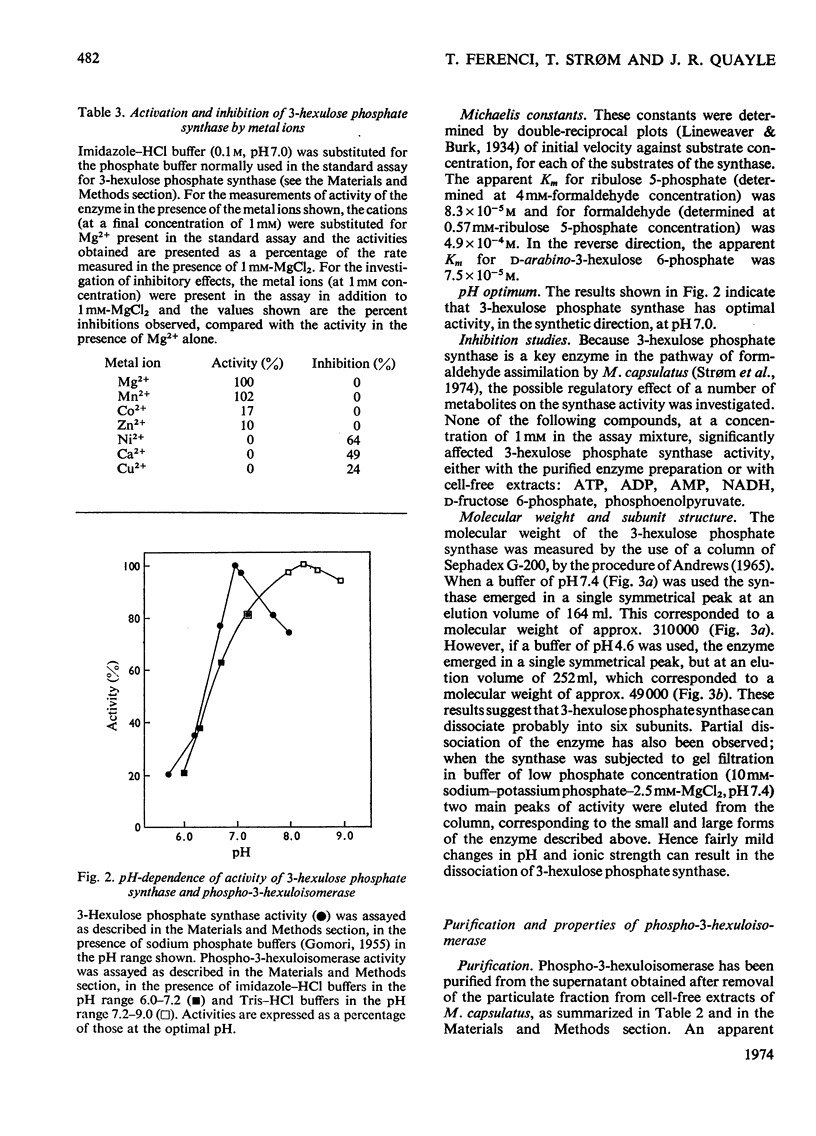
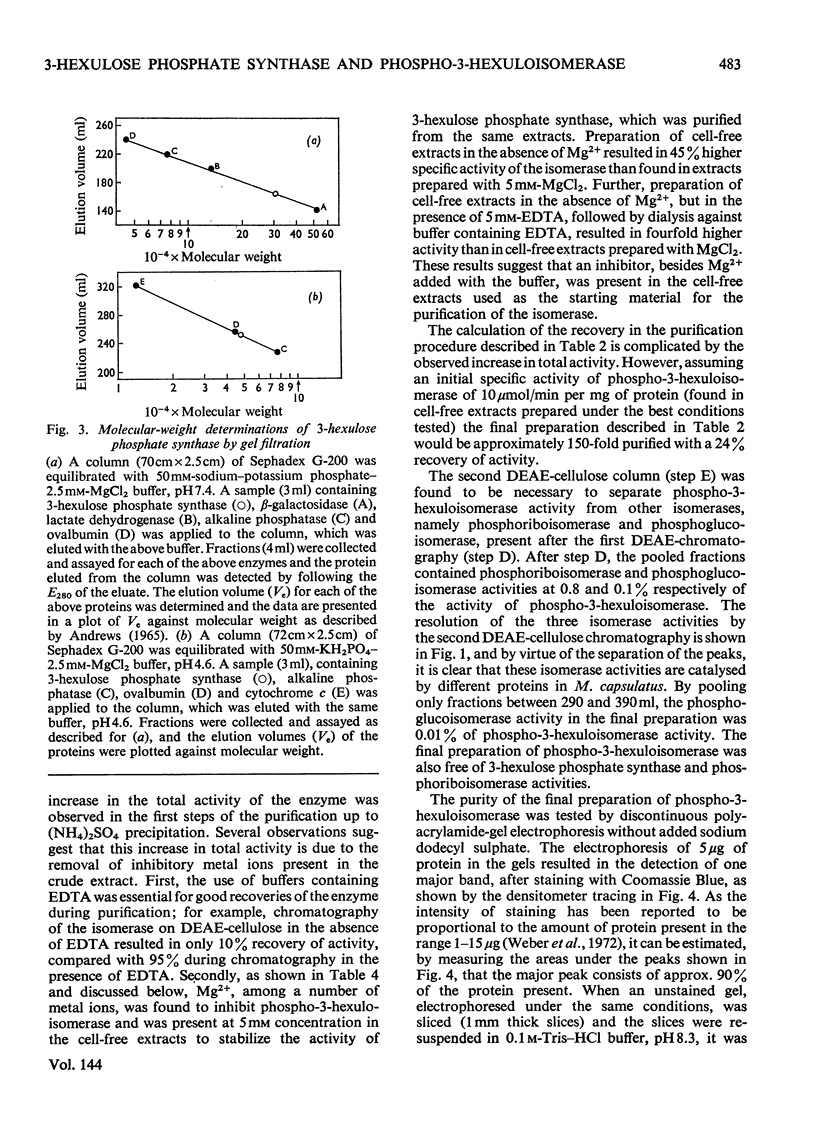
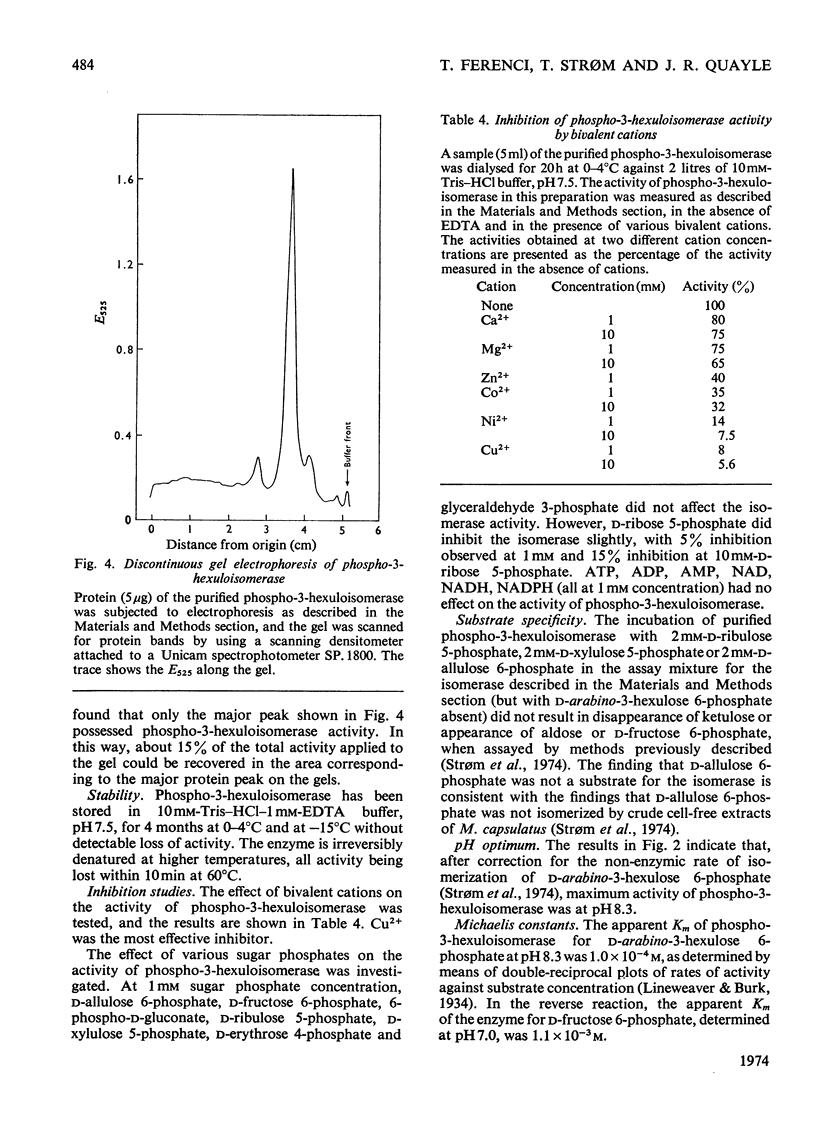
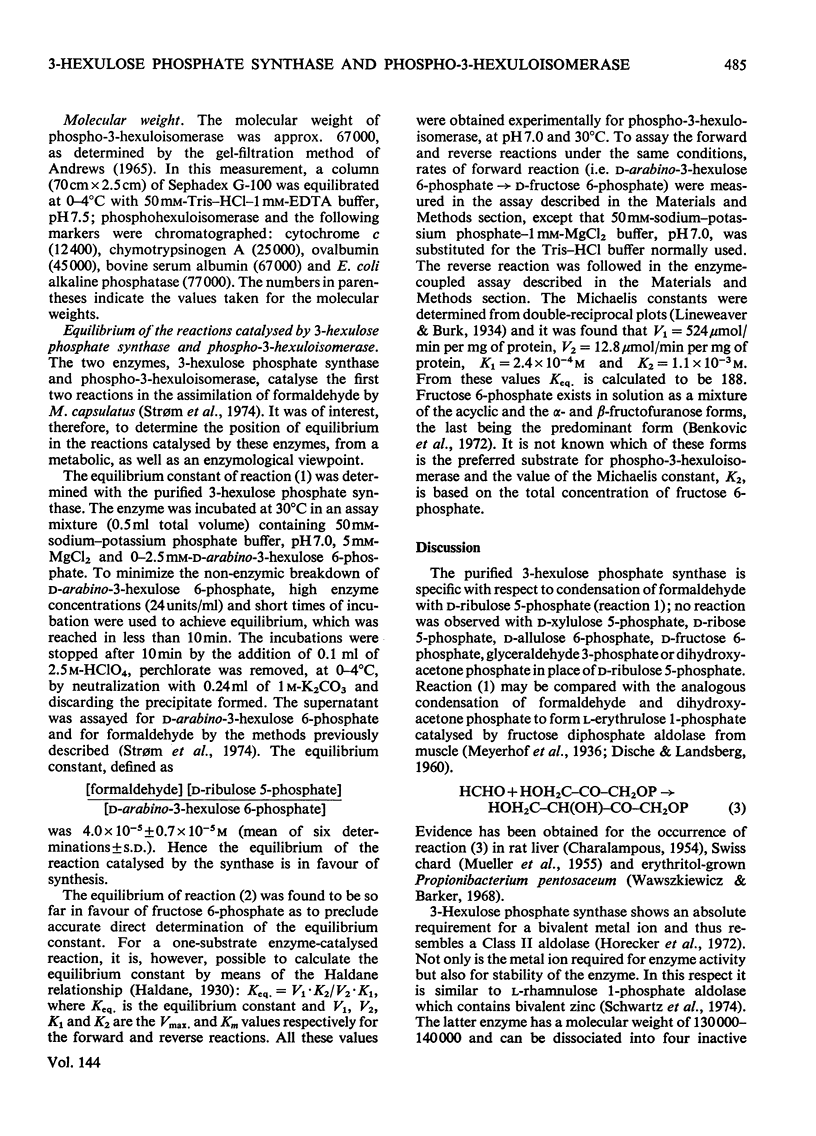
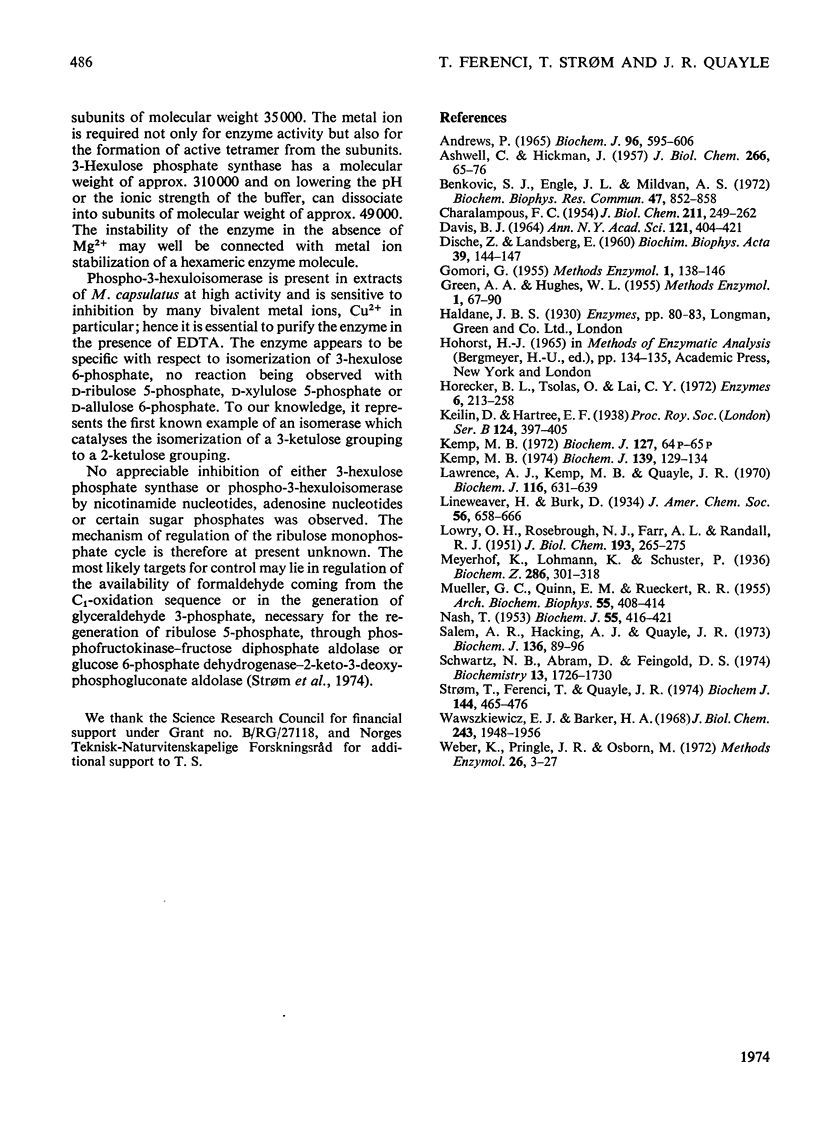
Selected References
These references are in PubMed. This may not be the complete list of references from this article.
- ASHWELL G., HICKMAN J. Enzymatic formation of xylulose 5-phosphate from ribose 5-phosphate in spleen. J Biol Chem. 1957 May;226(1):65–76. [PubMed] [Google Scholar]
- Andrews P. The gel-filtration behaviour of proteins related to their molecular weights over a wide range. Biochem J. 1965 Sep;96(3):595–606. doi: 10.1042/bj0960595. [DOI] [PMC free article] [PubMed] [Google Scholar]
- Benkovic S. J., Engle J. L., Mildvan A. S. Magnetic resonance studies of the anomeric distribution and manganese binding properties of fructose phosphates. Biochem Biophys Res Commun. 1972 May 26;47(4):852–858. doi: 10.1016/0006-291x(72)90571-2. [DOI] [PubMed] [Google Scholar]
- CHARALAMPOUS F. C. Mechanism of formation of erythrulose-1-phosphate by phosphoketotetrose aldolase of rat liver. J Biol Chem. 1954 Nov;211(1):249–262. [PubMed] [Google Scholar]
- DAVIS B. J. DISC ELECTROPHORESIS. II. METHOD AND APPLICATION TO HUMAN SERUM PROTEINS. Ann N Y Acad Sci. 1964 Dec 28;121:404–427. doi: 10.1111/j.1749-6632.1964.tb14213.x. [DOI] [PubMed] [Google Scholar]
- DISCHE Z., LANDSBERG E. A colorimetric procedure for the determination of triose phosphate and fructose-1,6-diphosphate in presence of other sugars. Biochim Biophys Acta. 1960 Mar 25;39:144–147. doi: 10.1016/0006-3002(60)90130-x. [DOI] [PubMed] [Google Scholar]
- Kemp M. B. Hexose phosphate synthase from Methylcoccus capsulatus makes D-arabino-3-hexulose phosphate. Biochem J. 1974 Apr;139(1):129–134. doi: 10.1042/bj1390129. [DOI] [PMC free article] [PubMed] [Google Scholar]
- LOWRY O. H., ROSEBROUGH N. J., FARR A. L., RANDALL R. J. Protein measurement with the Folin phenol reagent. J Biol Chem. 1951 Nov;193(1):265–275. [PubMed] [Google Scholar]
- Lawrence A. J., Kemp M. B., Quayle J. R. Synthesis of cell constituents by methane-grown Methylococcus capsulatus and Methanomonas methanooxidans. Biochem J. 1970 Feb;116(4):631–639. doi: 10.1042/bj1160631. [DOI] [PMC free article] [PubMed] [Google Scholar]
- NASH T. The colorimetric estimation of formaldehyde by means of the Hantzsch reaction. Biochem J. 1953 Oct;55(3):416–421. doi: 10.1042/bj0550416. [DOI] [PMC free article] [PubMed] [Google Scholar]
- Salem A. R., Hacking A. J., Quayle J. R. Cleavage of malyl-Coenzyme A into acetyl-Coenzyme A and glyoxylate by Pseudomonas AM1 and other C1-unit-utilizing bacteria. Biochem J. 1973 Sep;136(1):89–96. doi: 10.1042/bj1360089. [DOI] [PMC free article] [PubMed] [Google Scholar]
- Schwartz N. B., Abram D., Feingold D. S. L-Rhamnulose 1-phosphate aldolase of Escherichia coli. The role of metal in enzyme structure. Biochemistry. 1974 Apr 9;13(8):1726–1730. doi: 10.1021/bi00705a026. [DOI] [PubMed] [Google Scholar]
- Strom T., Ferenci T., Quayle J. R. The carbon assimilation pathways of Methylococcus capsulatus, Pseudomonas methanica and Methylosinus trichosporium (OB3B) during growth on methane. Biochem J. 1974 Dec;144(3):465–476. doi: 10.1042/bj1440465. [DOI] [PMC free article] [PubMed] [Google Scholar]
- Wawszkiewicz E. J., Barker H. A. Erythritol metabolism by Propionibacterium pentosaceum. The over-all reaction sequence. J Biol Chem. 1968 Apr 25;243(8):1948–1956. [PubMed] [Google Scholar]
- Weber K., Pringle J. R., Osborn M. Measurement of molecular weights by electrophoresis on SDS-acrylamide gel. Methods Enzymol. 1972;26:3–27. doi: 10.1016/s0076-6879(72)26003-7. [DOI] [PubMed] [Google Scholar]


